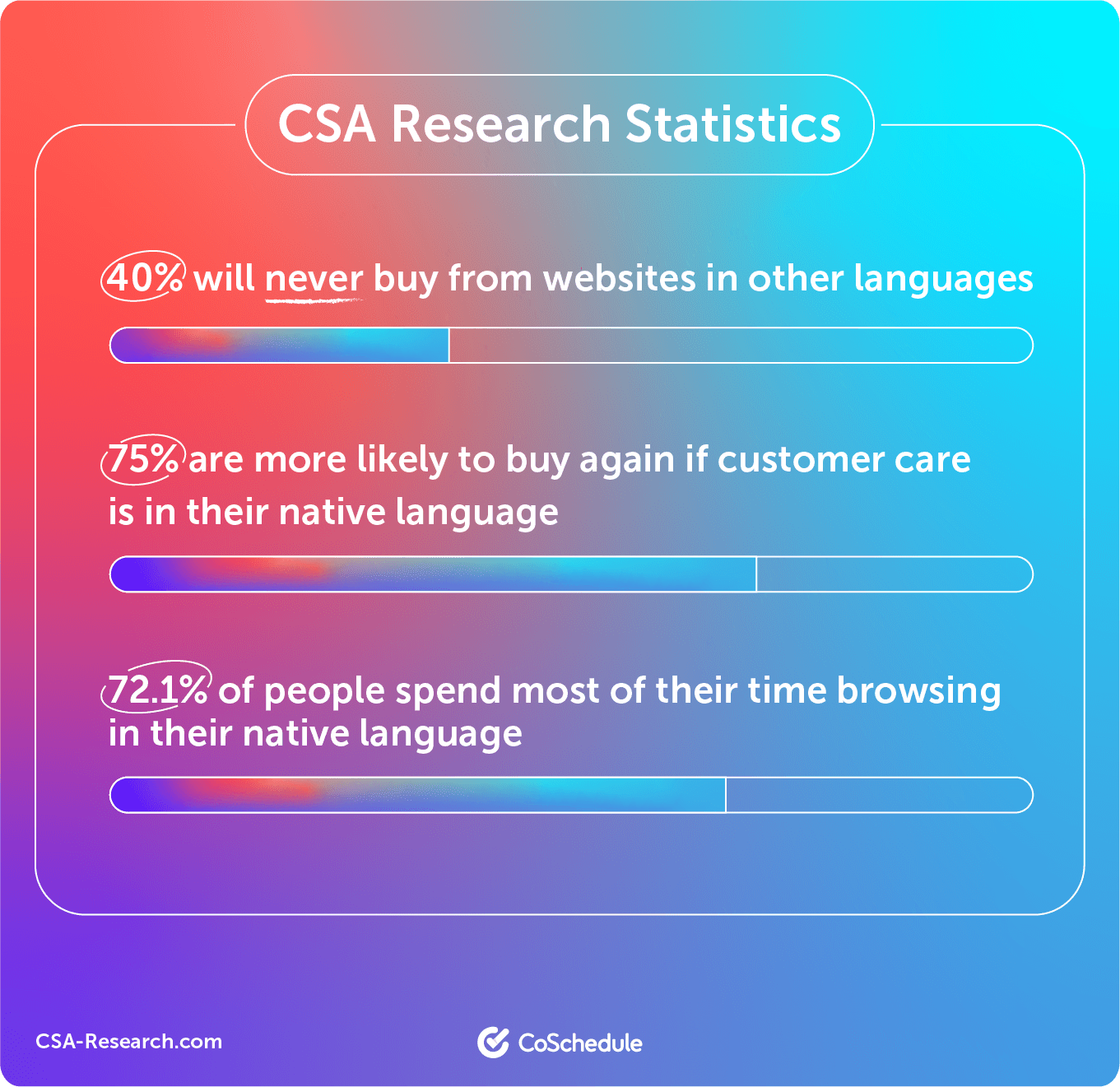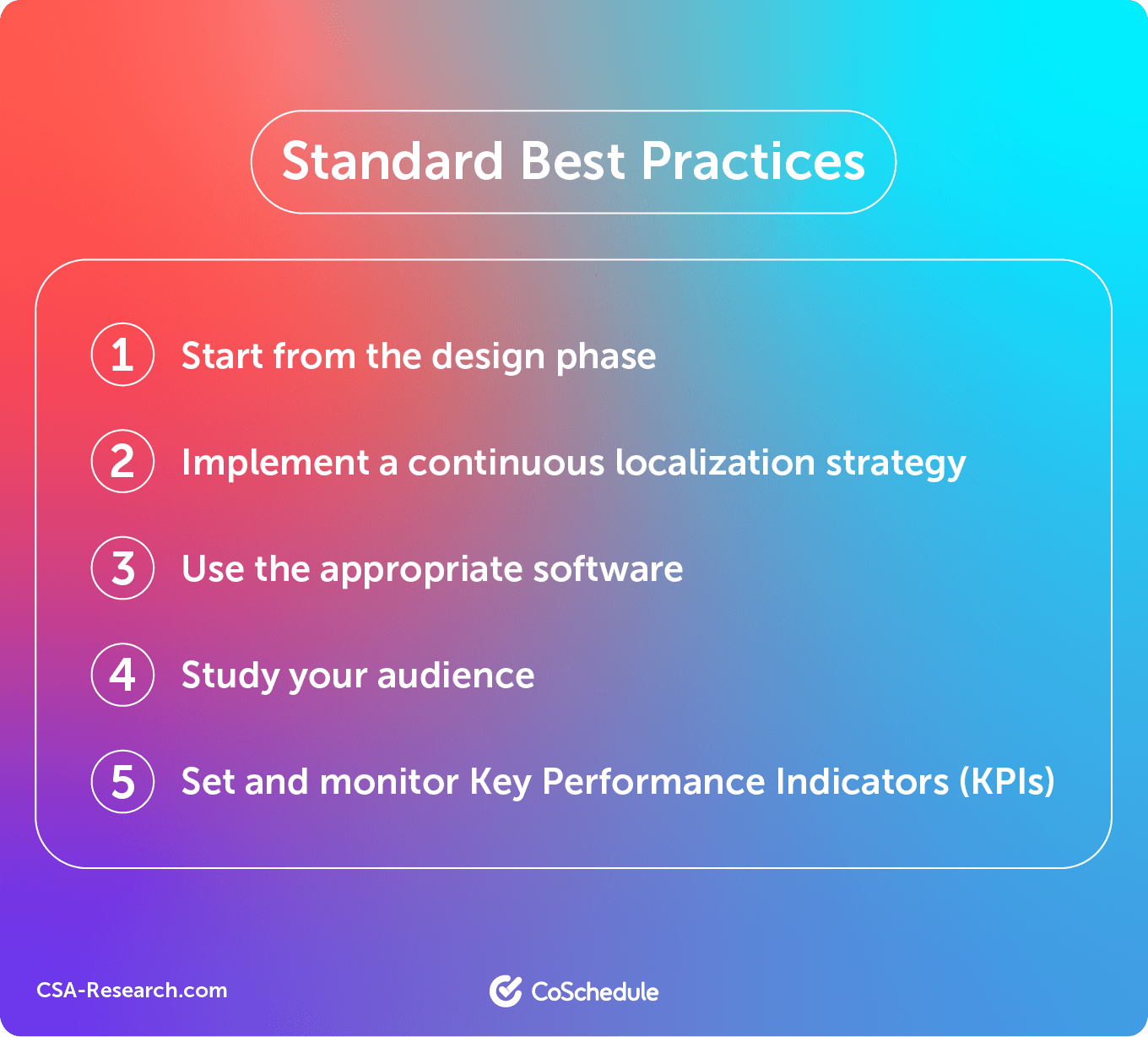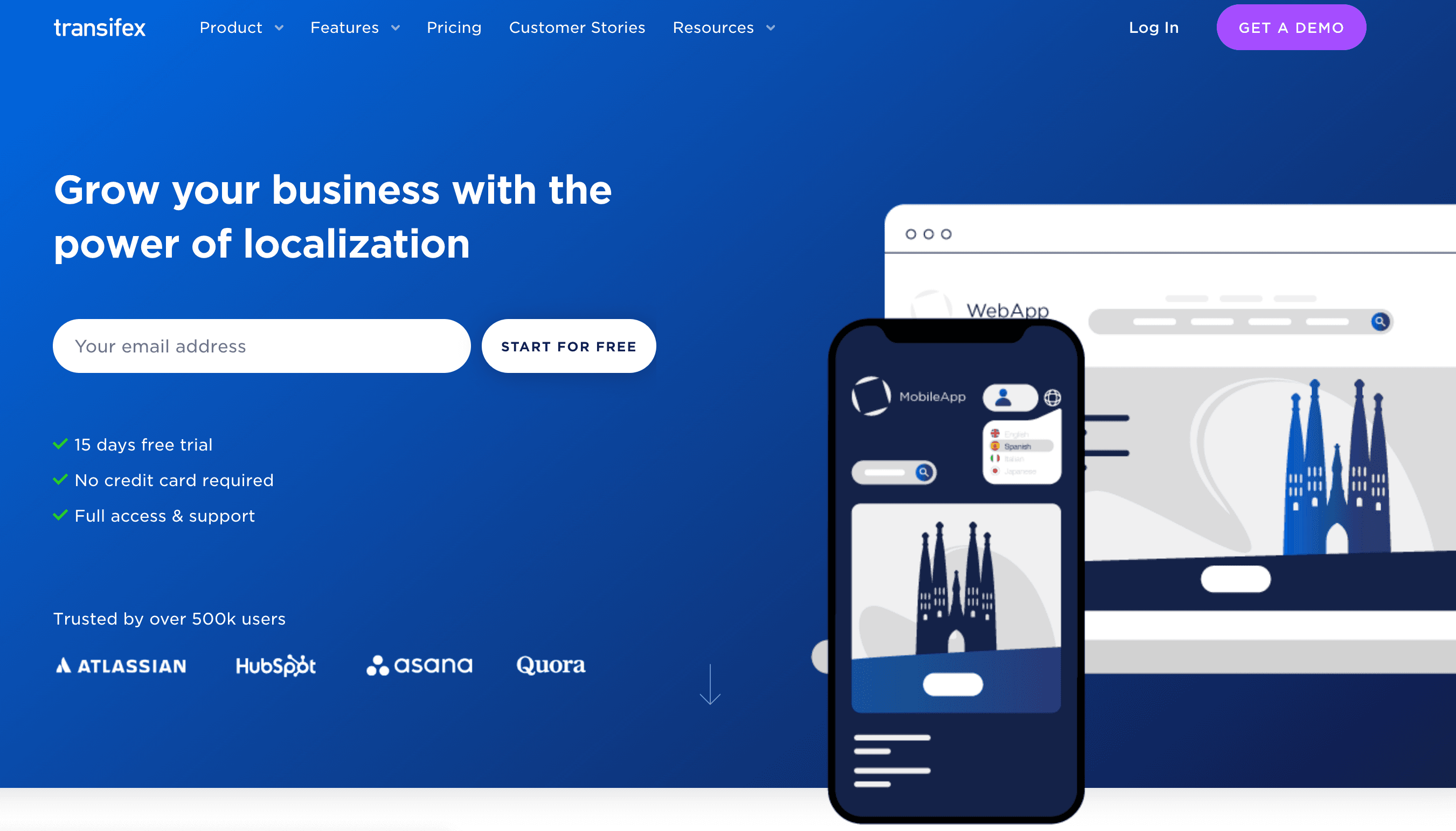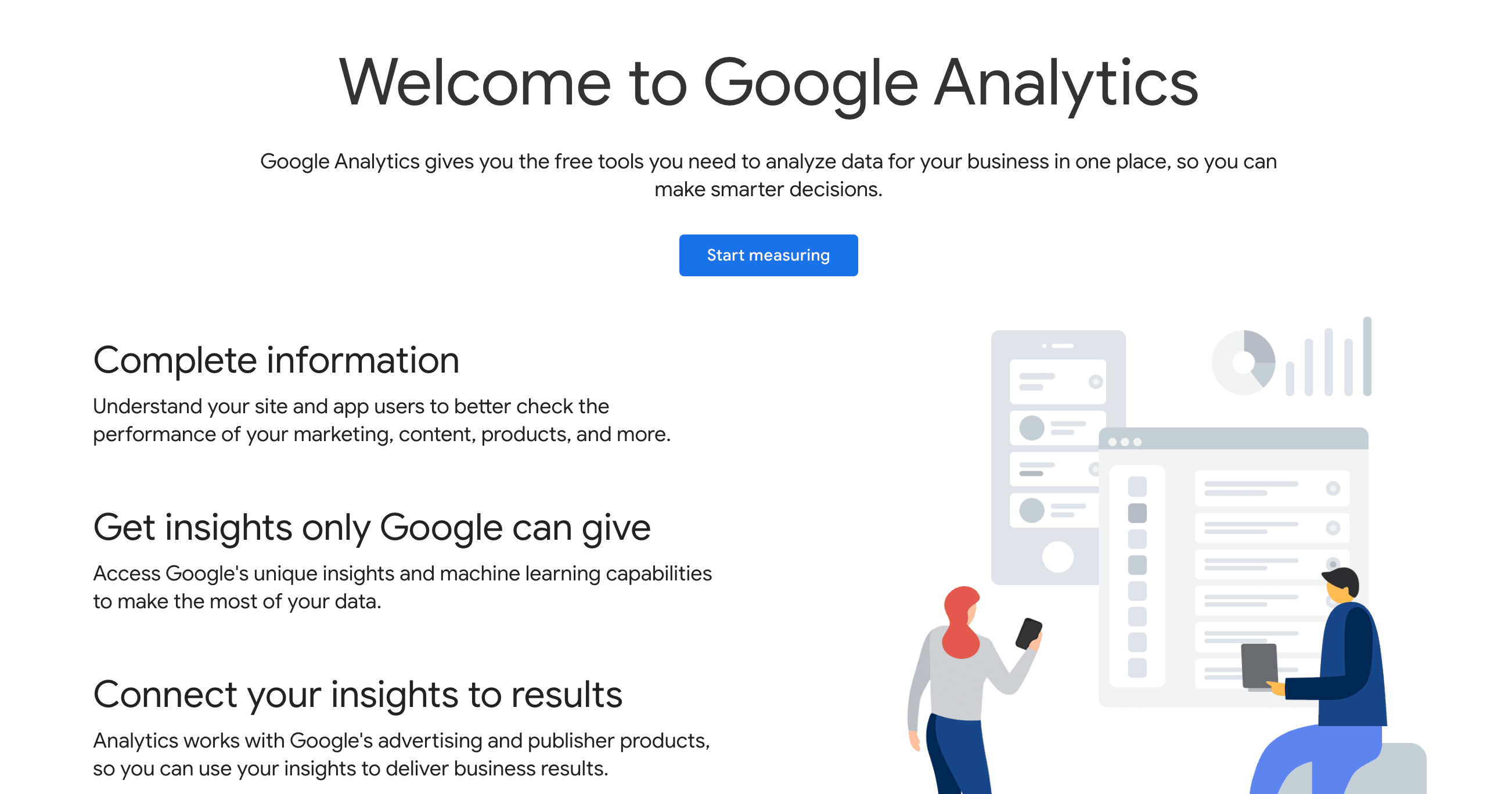
There are many ways to expand a business. You could add new products, claim a niche market, seek referrals, or partner with other companies. One perhaps lesser-known approach is localization.
Localization is a great way to achieve global expansion, enter new markets, and improve your existing customers' experience and overall satisfaction. Let’s dive into localization and how to use it to your advantage.
What is Localization?
Localization is a process where you rework your existing content to make it more appealing to another locale or culture.
What do you need to consider when adapting your content? The first thing that comes to mind might be translation, but there is more to it than just language. Typically, when it comes to localization, you should also think about matters including:
- Media
- Currency of locale
- Units of measurement
- Tone of content
Depending on the kind of business you want to expand, there may be even more factors to consider, including the local culture. That said, depending on your business, you may find that some factors are more important than others.
For example, if you are developing video games without in-app purchases, leaving currency as an afterthought is probably acceptable. But if you want to expand an e-commerce store, currency should be one of the first things to localize.
Localization and its Relation to Global Expansion
The steps you should take when expanding your business with localization are pretty straightforward:
- Reach into new markets
- Grow your customer base
- Achieve success
To get a rough estimation of the ROI of localization, for every $1 spent, you can expect to get back $25.
According to
CSA Research:

According to
Statista, China and South Korea contributed to more than half of the world’s online retail sales, with Denmark and Indonesia at 20.2%. That’s a whole lot of people who don’t speak English as their first language.
Furthermore, avoiding localization may even cost you in terms of customers. Estimates show you can
lose 8% to 13% of your customers if your app is not localized. Optimized content for a specific locale has six times more engagement than the global variants.
The Benefits of Expanding To New Markets
One of the most significant advantages of global expansion is getting a competitive edge.
Vida Health, for example, is the first major platform in their category to launch a complete Spanish solution. Vida Health assists patients in managing chronic health conditions in English and Spanish while continuously updating their content to be up-to-date and evidence-based. With this update, they are establishing themselves globally and broadening their brand recognition outside of English-speaking countries.
Expanding globally also leads to the benefit of getting more access to local talent. Professionals are more likely to get interested in working for you if they can relate to your business on a cultural level.
You can also consider local SEO when strategizing. Global expansion helps you rank for more keywords, leading to more organic traffic and business opportunities.
All of this, in return, can lead to increased business growth with access to more prospects, customers, sales, and ways to diversify your customer base.
Getting Started With Localization and Global Expansion
As mentioned before, localization isn’t just about translation. So, how does one get started with it?
The first thing to remember is that you can be flexible with your localization strategy.
Different companies utilize unique localization strategies, depending on what works best for them.
But with that said, there are some standard best practices that you’ll want to follow:

Let’s go into these steps in a bit more detail.
1. Start from the Design Phase
One of the most common mistakes in localization is leaving it as an afterthought; you first finish setting up everything in your applications and website, and then you start thinking about translating and localizing it.
The problem with this workflow is that some aspects of your work become immutable. If you encounter bugs or something that doesn’t work, you may have to re-design and re-develop several components, which will consume a lot more time and expenses than necessary.
That is why you ideally want to start localization from the design phase of a project, be it a:
- Marketing website
- Desktop app
- Mobile app
- Marketing materials or assets
- Documentation or help center
With that workflow, localization happens in parallel with the production process.
You can design everything with localization in mind, easily catch bugs and issues, and dynamically fix them before they become a big deal.
The most effective way to do that is by using a Translation Management System (TMS) in combination with a design integration, such as
Sketch or
Figma. The whole team, from product designers to developers and engineers, can work in sync with this approach.
 Source
Source
2. Implement a Continuous Localization Strategy
Leaving localization until the end of your project is called a waterfall localization strategy, which is not up to today’s standard. Nowadays, you should aim for a continuous localization approach.
Continuous localization means you work on localization in parallel with the product or business without any blockers. The whole team can work together while localization is in progress.
This workflow allows your localization efforts to go live at any point.
All of this is important due to the nature of digital content. You can’t translate something like an app once and consider the task completed. When it’s time for an update, the localization team should be able to quickly step in before the update is live in the app store.
The same philosophy goes for websites. As you add new pages, the localization team should be able to keep up.
But for all of this to happen, you need the right tools!
3. Use the Appropriate Software
There are plenty of localization tools out there, but there are also platforms that contain all of these tools under one package. These platforms are what we call
Translation Management Systems.
 Source
Source
A Translation Management System offers the considerable benefit of having one place to manage all of your content with source and target languages. A TMS is also a place for the whole localization team to seamlessly communicate and collaborate and for all of the features and integrations that come with the platform, such as Translation Memory, Context, Figma, Slack, etc., to come together.
These kinds of platforms offer continuous localization. If you dig under the surface, you’ll find out that there are more tricks that you can utilize.
One example is automatic push & pull requests for your content between the TMS and the app, eliminating the need to constantly have to download and upload resources when you make changes to the target language.
Another trick is using Translation Memory to seamlessly translate two apps with the same content without manually copying and pasting translations from one app to another.
Once you have your TMS in play, it’s time to start thinking about the bigger picture.
4. Study your Audience
With a solid strategy and tools in place, you can shift your focus to which markets you should be localizing in. After all, localization isn’t just translation. You need to speak to your customers the way they like the most.
Most Japanese, for example, typically don’t shake hands. Bows are more common as a sign of respect. If you are developing an ad where two people are shaking hands, you may want to replace that gesture with a bow instead to get better results.
Another example is Spanish hand gestures. In the western world, the rock/horns sign commonly means, “You rock.” In many Mediterranean countries, that gesture is offensive and indicates that someone is being cheated on (aka, ‘putting on the horns’).
Different regions and locales have their own culture, and it’s a win for your business if you can naturally speak to them. So, study your audience before localizing.
5. Set and Monitor Key Performance Indicators
 Source
Source
Measuring what works and what doesn’t is key to improving your results in pretty much everything, including localization and global expansion for your business.
There are tons of things to keep an eye on for measuring your success. Some of the most important ones are:
- How many customers do you gain in a target locale before and after localization
- Bounce rate on localized VS non-localized pages
- Conversion rate on localized pages
- Customer retention rate
- Local SEO ranking per locale
These are just a few metrics you can monitor, but you can adjust them based on your specific business.
Wrapping Up
Localization can be an invaluable tool for your business. If you start with a solid strategy, you can expand your business into more regions and even reach global expansion.
Localization is a great way to tap into new markets, get a competitive edge, grow your business, and add additional revenue streams. Remember these tips as you build your localization plan and set yourself up for success. There are many ways to expand a business. You could add new products, claim a niche market, seek referrals, or partner with other companies. One perhaps lesser-known approach is localization.
Localization is a great way to achieve global expansion, enter new markets, and improve your existing customers' experience and overall satisfaction. Let’s dive into localization and how to use it to your advantage.
There are many ways to expand a business. You could add new products, claim a niche market, seek referrals, or partner with other companies. One perhaps lesser-known approach is localization.
Localization is a great way to achieve global expansion, enter new markets, and improve your existing customers' experience and overall satisfaction. Let’s dive into localization and how to use it to your advantage.
 According to Statista, China and South Korea contributed to more than half of the world’s online retail sales, with Denmark and Indonesia at 20.2%. That’s a whole lot of people who don’t speak English as their first language.
Furthermore, avoiding localization may even cost you in terms of customers. Estimates show you can lose 8% to 13% of your customers if your app is not localized. Optimized content for a specific locale has six times more engagement than the global variants.
According to Statista, China and South Korea contributed to more than half of the world’s online retail sales, with Denmark and Indonesia at 20.2%. That’s a whole lot of people who don’t speak English as their first language.
Furthermore, avoiding localization may even cost you in terms of customers. Estimates show you can lose 8% to 13% of your customers if your app is not localized. Optimized content for a specific locale has six times more engagement than the global variants.
 Let’s go into these steps in a bit more detail.
Let’s go into these steps in a bit more detail.
 Source
Source
 Source
A Translation Management System offers the considerable benefit of having one place to manage all of your content with source and target languages. A TMS is also a place for the whole localization team to seamlessly communicate and collaborate and for all of the features and integrations that come with the platform, such as Translation Memory, Context, Figma, Slack, etc., to come together.
These kinds of platforms offer continuous localization. If you dig under the surface, you’ll find out that there are more tricks that you can utilize.
One example is automatic push & pull requests for your content between the TMS and the app, eliminating the need to constantly have to download and upload resources when you make changes to the target language.
Another trick is using Translation Memory to seamlessly translate two apps with the same content without manually copying and pasting translations from one app to another.
Once you have your TMS in play, it’s time to start thinking about the bigger picture.
Source
A Translation Management System offers the considerable benefit of having one place to manage all of your content with source and target languages. A TMS is also a place for the whole localization team to seamlessly communicate and collaborate and for all of the features and integrations that come with the platform, such as Translation Memory, Context, Figma, Slack, etc., to come together.
These kinds of platforms offer continuous localization. If you dig under the surface, you’ll find out that there are more tricks that you can utilize.
One example is automatic push & pull requests for your content between the TMS and the app, eliminating the need to constantly have to download and upload resources when you make changes to the target language.
Another trick is using Translation Memory to seamlessly translate two apps with the same content without manually copying and pasting translations from one app to another.
Once you have your TMS in play, it’s time to start thinking about the bigger picture.
 Source
Measuring what works and what doesn’t is key to improving your results in pretty much everything, including localization and global expansion for your business.
There are tons of things to keep an eye on for measuring your success. Some of the most important ones are:
Source
Measuring what works and what doesn’t is key to improving your results in pretty much everything, including localization and global expansion for your business.
There are tons of things to keep an eye on for measuring your success. Some of the most important ones are:


